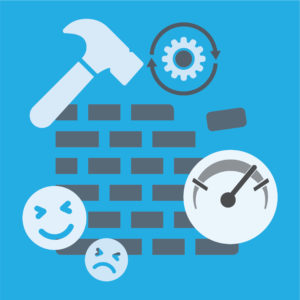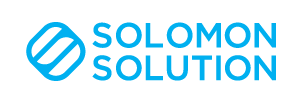
OK, hands up if you’ve worked in one of those organizations (or teams, or for one of those clients). You know what I’m talking about: the organizations where leadership likes to talk a big game about innovation, but refuses to support anything that smacks of risk. Or the team where your manager says they want to be on the cutting edge—except if it means sticking out their necks out for an unfamiliar process or idea. If you’re a decision-maker, maybe even you have felt that hesitation: “I want to be innovative, but what will happen to my reputation if I fail?”
Being paralyzed by the status quo never drove anyone forward. But bridging the gap between talking about innovation and actually making it a part of how you do business takes more than just heart. It requires methodically incorporating failure into your workflow. That doesn’t mean making it “safe to fail” — that means setting the expectation that your people will fail, and fail often.
Why you should want your people to fail

Here’s the deal: innovation and failure are two sides of the same coin. You can’t move forward and learn if you aren’t willing to try a lot of things, most of which won’t work out in the long run.
A huge part of adopting failure as the cornerstone of an innovative approach is to destigmatize the word “failure” itself. It’s so laden with negative connotations that it’s become poisonous. The point of failing isn’t actually to fail; it’s to learn. Innovation is really just a set of failures that somehow results in a success. As a leader, setting expectations around failure is like putting a safety net under the tightrope that people walk as they try out new ideas.
Here’s where most people get stuck: wondering how to start the cycle of intentional, controlled failure that leads to real innovation. If you’re lingering in that place, let me assure you: this is not the time for subtlety. If you’re in charge of a team and you want them to try, fail, and learn, you can’t politely suggest it and then hope it happens on its own. You have to demand it—by setting and measuring the metrics of innovation and failure, then dedicating work time to experimentation.
Setting the stage for people to fail the right way
 Before you can demand failure, you have to level-set expectations around how (and how often) you want people to fail.
Before you can demand failure, you have to level-set expectations around how (and how often) you want people to fail.
One way to do so is by creating and communicating lead and lag measures. In case you’re unfamiliar with lead and lag measures, they really boil down to “if you do a bunch of small things, then a big outcome will happen.” For example: if you stack 10,000 bricks (many little things), you will end up with some type of wall (one big outcome). The number of bricks stacked is a lead measure, the wall is the lag measure. What does that mean for learning through experimentation? The number of experiments your people try is the lead, and the learning you get out of those experiments is the lag. Failure is proof that the experiments are taking place — a byproduct of the efforts on the way to whatever big learning outcome lies ahead.
Once you’ve established the way you’ll measure, it’s important to communicate how much time you expect your people to spend on trying out new ideas. Set aside time for your people to ideate and protect it at all costs. Don’t just speak in vague terms of “innovation” and your team being “a safe environment in which to fail”; place the net underneath the tightrope by telling them how many experiments you want them to execute in a month and how much time they can spend on them (for example, each experiment might have a constraint of 20 hours that they can invest). Let them know that the metric by which they’ll be reviewed, whether they’re a success or failure, is whether they’ve executed they number of experiments and what they learned from them.
Some experiments will generate no results. Some will be a huge success and generate 20x the expected results. Do not—I repeat, DO NOT—throw out the failures and focus on the successes. If you’re truly interested in learning, put both results into a key learnings document and start iterating on the things that didn’t work, as well as the things that did. That is how you show that you innovation, and that learning through failure, is truly a part of your culture. The emotional “fuzzy blanket” of words only goes so far. People have to know that you’re serious when you say you expect them to fail.
Nurturing the cycle of trying, failing, and learning (or, Building an ideas-based culture)
 OK, you’re on board so far: you’re jazzed up and ready to help your people fail. Let’s talk about the practicalities of making that happen.
OK, you’re on board so far: you’re jazzed up and ready to help your people fail. Let’s talk about the practicalities of making that happen.
Get it in writing
First things first: build a list of ideas. Whether you have a big-ass poster board where people write ideas down, or you keep a Trello board or a Smartsheet board, or you have a shared Excel file or a Google Sheet—it doesn’t really matter. You could even have an anonymous comment box where you could start to collect ideas, if you’re working in a bureaucratic organization and you know people will be hesitant to come forward until you build trust in the process. The format matters less than getting the ball rolling on collecting ideas and putting them in writing. Gather the ideas in a list and ask everyone to vote on which ones they want to do.
Test it out
Once you’ve got your list started (and remember, you should keep adding to the list as time goes on—it will always be a work in progress) start testing a few of the ideas. When you get the first one that happened to work, celebrate it and then show the value of the idea. It’s easy for organizations to stay stuck in a “File your TPS report and do as you’re told, that’s all we expect” mentality, but that kind of culture does not foster innovation. From a leadership perspective, you have to start setting the expectation that you want your people’s ideas, that you’re willing to hear them and take them seriously.
Celebrate the idea generators
Once you start testing the ideas you’ve collected, make a point of celebrating the people who are bringing the most ideas to the table: “Jane just dropped 30 ideas this month. That is awesome. Mad props to her.” Celebrating the fact that people are bringing their ideas, focusing on their bravery and willingness, will go a long way to fostering your culture of innovation. Then sharing the results of those ideas, both those that worked and those that didn’t, will reinforce that failures and successes alike result in valuable insight.
Keep asking questions
Whether you’re examining a successful experiment or a failure, make sure to keep thinking about the lessons it has to teach you. If the experiment didn’t turn out as expected, consider: what should you do to show the path that progress is being made? And if it did work, what can you learn from it, and what were its results? Continue to draw the line between the ideas and what learnings you were able to produce.
Remember to track
In order for everyone to see progress, remember to track two very important variables:
- The number of ideas, ideally per person per week or per month (or just by team, if tracking individuals is going to freak everybody out)
- The number of experiments that you ran
Number one is the most important to start with: where are you keeping the ideas, how many are you collecting, how many new ideas do you have to work with? This will help make sure people keep submitting their ideas. Number two is about the learning, whether the ideas win or fail, and it is the key metric. It helps create and maintain excitement by keeping people in a fifth grade STEM lab mindset: they’re going to run experiments, stuff might blow up, and that’s going to be fun. Results are important, but you’ll never get results if people are afraid to try.
Breaking down cultural barriers
 Learning to fail is a process that usually comes with growing pains. Some companies find the process relatively natural—mainly those who already recognize failure as part of the learning cycle. Organizations that are more risk-averse, consensus-driven and hierarchical tend to be environments that are more resistant to this kind of change. Moving the needle on innovation is not impossible, but can be a challenge.
Learning to fail is a process that usually comes with growing pains. Some companies find the process relatively natural—mainly those who already recognize failure as part of the learning cycle. Organizations that are more risk-averse, consensus-driven and hierarchical tend to be environments that are more resistant to this kind of change. Moving the needle on innovation is not impossible, but can be a challenge.
If you’re looking to increase innovation within an organization that already supports iterative experimentation and incremental failures, you’re in good shape. You shouldn’t be up against too much resistance as you begin asking people to risk failure in the name of progress.
If you’re in an environment where the politics present barriers to embracing failure-driven learning on a larger scale—places where failure is kept secret and only rousing success is acknowledged—you may have to play things a little closer to the chest. Initiating the positive cycle of ideation, experimentation, and learning in your immediate work group will allow your team to gain confidence in the process and feel good about communicating its successes to the larger organization.
The bottom line
 Embracing failure as a critical part of success begins with a leader who wants to win, and who is willing to take their team into a scary place to do so. Safety guarantees you won’t fail, but it also guarantees mediocrity.
Embracing failure as a critical part of success begins with a leader who wants to win, and who is willing to take their team into a scary place to do so. Safety guarantees you won’t fail, but it also guarantees mediocrity.
If you want to do the biggest, best, most impactful thing, you have to be willing to fail very quickly and often to be able to win first. Whatever business you’re in, one thing remains true: whoever innovates fastest gets to reap the rewards of being the first in an innovative space. But that cannot happen without risking, and embracing, inevitable failures along the way.
It’s what you do with those failures that will make or break you, your team, and your ability to push through and win. So celebrate the things you learn. Embrace the byproducts and results of that process of an innovative process. And be OK with failing—as long as you do it right.

